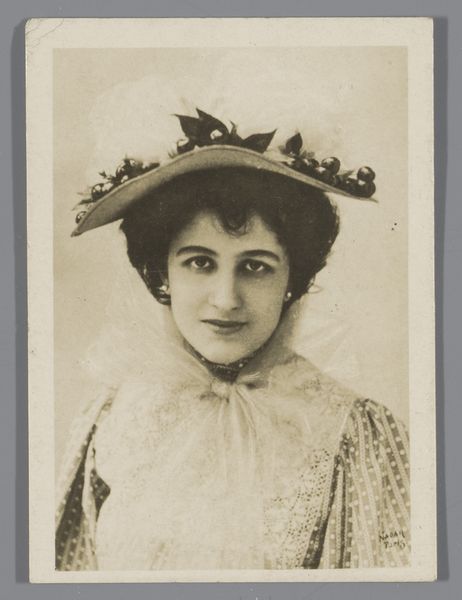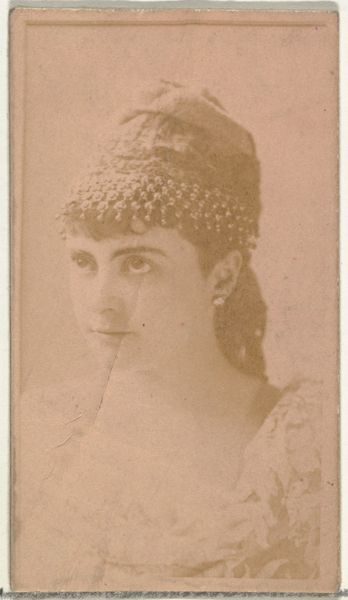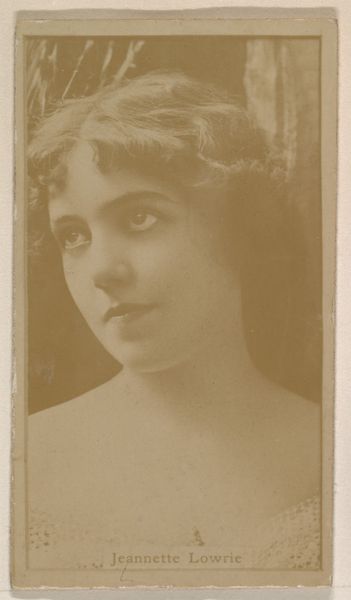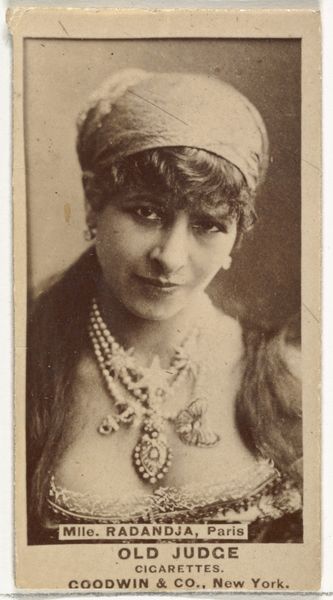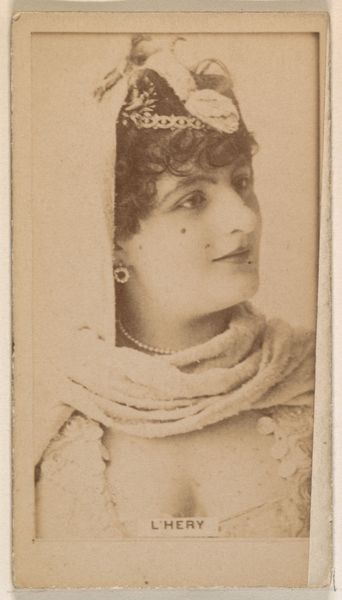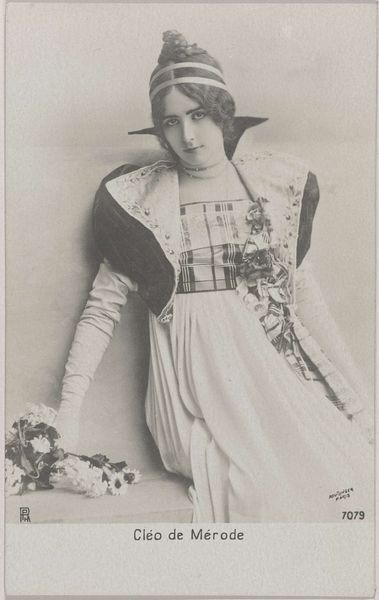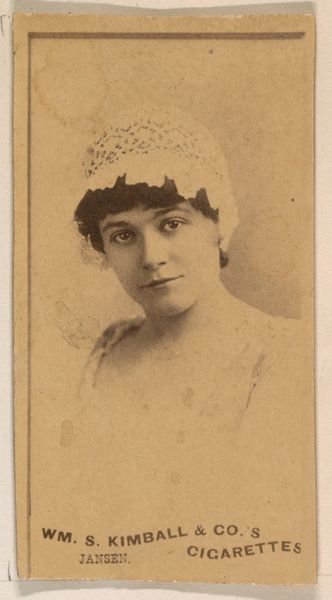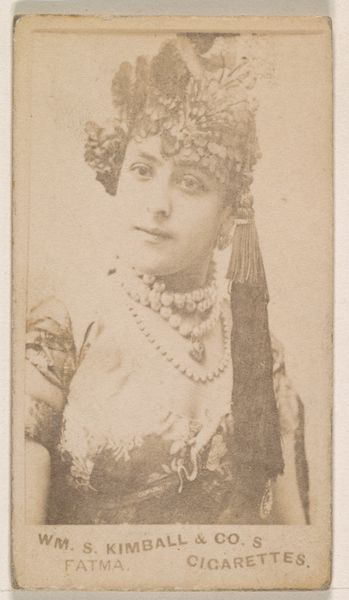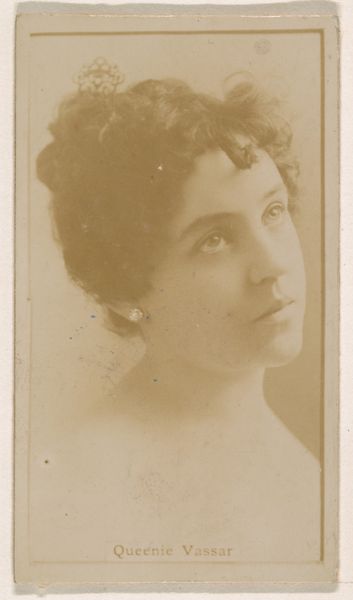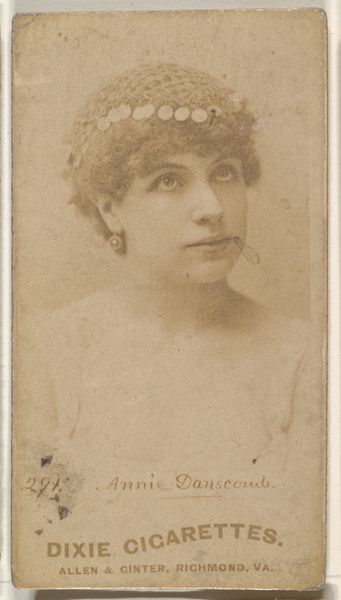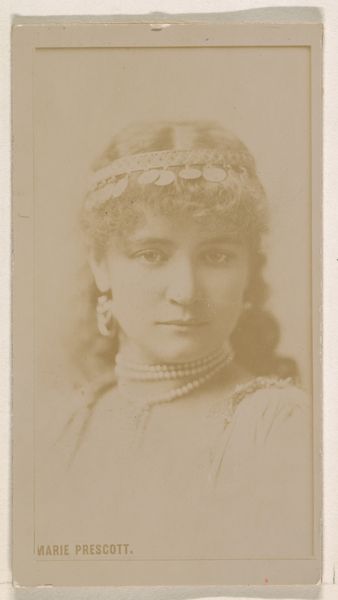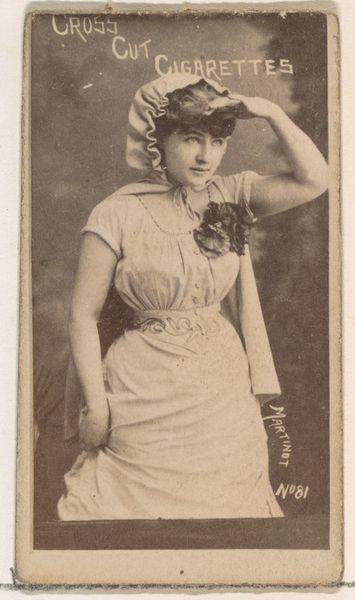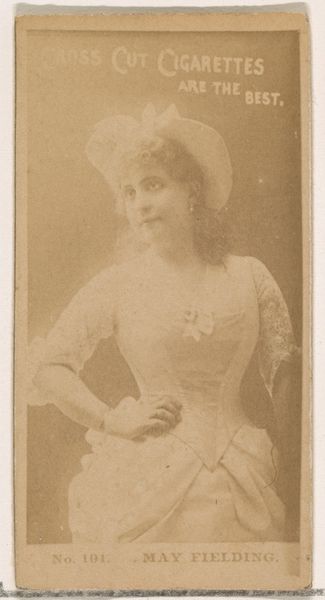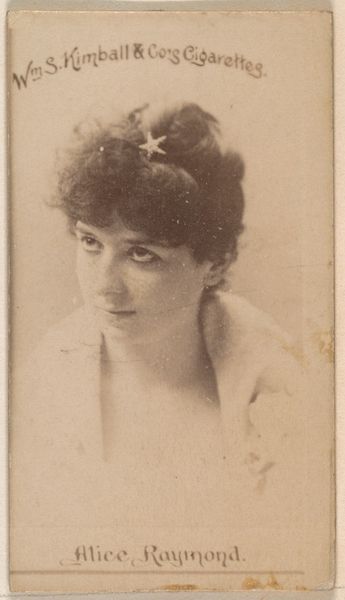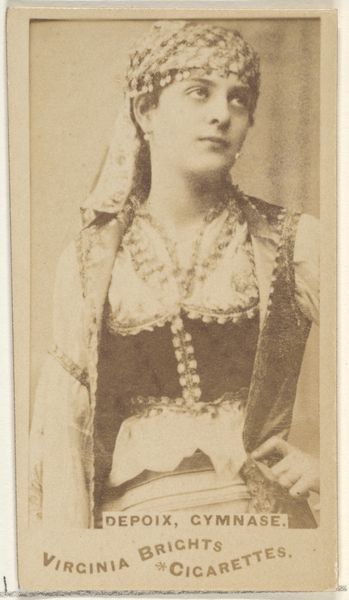
photography
#
portrait
#
art-nouveau
#
photography
#
historical photography
#
symbolism
Dimensions: height 139 mm, width 86 mm
Copyright: Rijks Museum: Open Domain
This is Léopold Reutlinger's portrait of the dancer Cléo de Mérode. The photograph is small, a muted grey, and it exudes a certain Belle Époque delicacy. Note how the subject is framed: the composition centers on de Mérode's face, drawing our eyes to her serene expression. The formal arrangement divides the image into distinct horizontal zones, from the headband to the fall of the dress, creating a structured yet gentle rhythm. Her gaze is directed upwards, giving a sense of ethereal detachment. The semiotic interplay here is striking; de Mérode’s adornments – the headband, the necklaces – are signs that point to an aesthetic ideal, a deliberate construction of image. Consider, too, the subtle texture achieved through the photographic process. It lends the image a softness, blurring the sharp edges and evoking a dream-like state. This photograph encapsulates the period’s fascination with image and representation. It shows how art functions not just as a visual experience, but as a complex interplay of signs and cultural meanings.
Comments
No comments
Be the first to comment and join the conversation on the ultimate creative platform.
